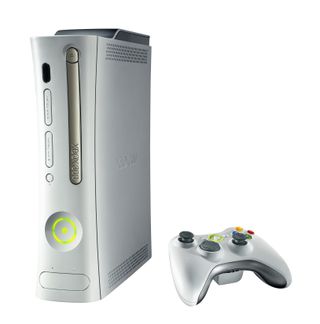Microsoft Sued Over Red Ring of Death
Apparently, a lawsuit against Microsoft exists in the Sacramento County Superior Court, alleging that an excessive number of Xbox 360 consoles have failed.


According to Dailygamesnews.com, the lawsuit also alleges that Microsoft purposely concealed the excessive failure rate in fear of losing its competitive edge over the imminent launch of both PlayStation 3 and Nintendo Wii consoles. If found guilty, Microsoft will have to publicly launch a refund program in California as well as disgorge all profits attributable to its sale of the Xbox 360.
Unfortunately, there are many factors weighing against the company while it faces a class action lawsuit. The lawsuit cites many recent articles published by websites and magazines that report on Microsoft’s knowledge of the hardware problems facing over 50% of the initial Xbox 360 consoles. Apparently, the company knew about the problem as far back as November 2005.
Although the Xbox 360 console’s financial success rate seems to contradict the company’s technical issues with its hardware, it’s generally believed to be the least reliable gaming console in this decade, perhaps overall. DailyTech spoke with a former EB Games employee during the console’s launch, discovering that 30% of its stock was defective. "The real numbers were between 30 to 33 percent,” said the former EB Games employee, adding that failure rate was even greater for launch consoles. “We had 35 Xbox 360s at launch. I know more than half of them broke within the first six months (red lights or making circles under the game discs). Two of them were dead on arrival.”
In turn, Microsoft extended the console’s warranty to three years instead of the typical one, specifically for cases of the dreaded "Red Ring of Death" (technically called General Hardware Failure). Initially the warranty covered the consoles manufactured in 2005, however that plan has extended to consoles built within the last year. Since the console’s initial release, Microsoft has steadily worked on improving the hardware, most notably implementing a new 2nd heatsink/pipe technology to provide additional cooling for the Xenos GPU.
The recent lawsuit is not the first Microsoft has had to face in regards to the Xbox 360. One consumer filed a class action lawsuit against Microsoft last year in Fort Lauderdale, Florida. Rather than complaining about hardware failure, this lawsuit focused on the damage to game disks caused by the console’s drive, another problem the Xbox 360 has endured since it’s initial launch. The lawsuit claimed that the console was "negligently designed and manufactured in that the Console’s laser disc reading assembly contacts and scratches the video game discs during normal and intended operation and use." Another consumer filed a class action lawsuit in November 2006, claiming that an update patch "bricked" his Xbox 360 console, seeking over $5 million in damages and to force Microsoft to repair all damaged consoles for free.
As of now, the failure rate has dropped significantly thanks to a redesigning of the motherboard and the new falcon 65nm chip. Currently Xbox 360 models -from Arcade to Elite- should feature the redesigned hardware with a failure rate now below 15%. Still, console errors are not uncommon, as many consumers still endure video errors, hard drive failures, or other technical issues associated with one red light flashing. Those outstanding problems may hinder Microsoft’s defense even though the overall statistics show improvement over the 1st generation of consoles.
Sign up to get the BEST of Tom's Guide direct to your inbox.
Here at Tom’s Guide our expert editors are committed to bringing you the best news, reviews and guides to help you stay informed and ahead of the curve!
Kevin started taking PCs apart in the 90s when Quake was on the way and his PC lacked the required components. Since then, he’s loved all things PC-related and cool gadgets ranging from the New Nintendo 3DS to Android tablets. He is currently a contributor at Digital Trends, writing about everything from computers to how-to content on Windows and Macs to reviews of the latest laptops from HP, Dell, Lenovo, and more.
